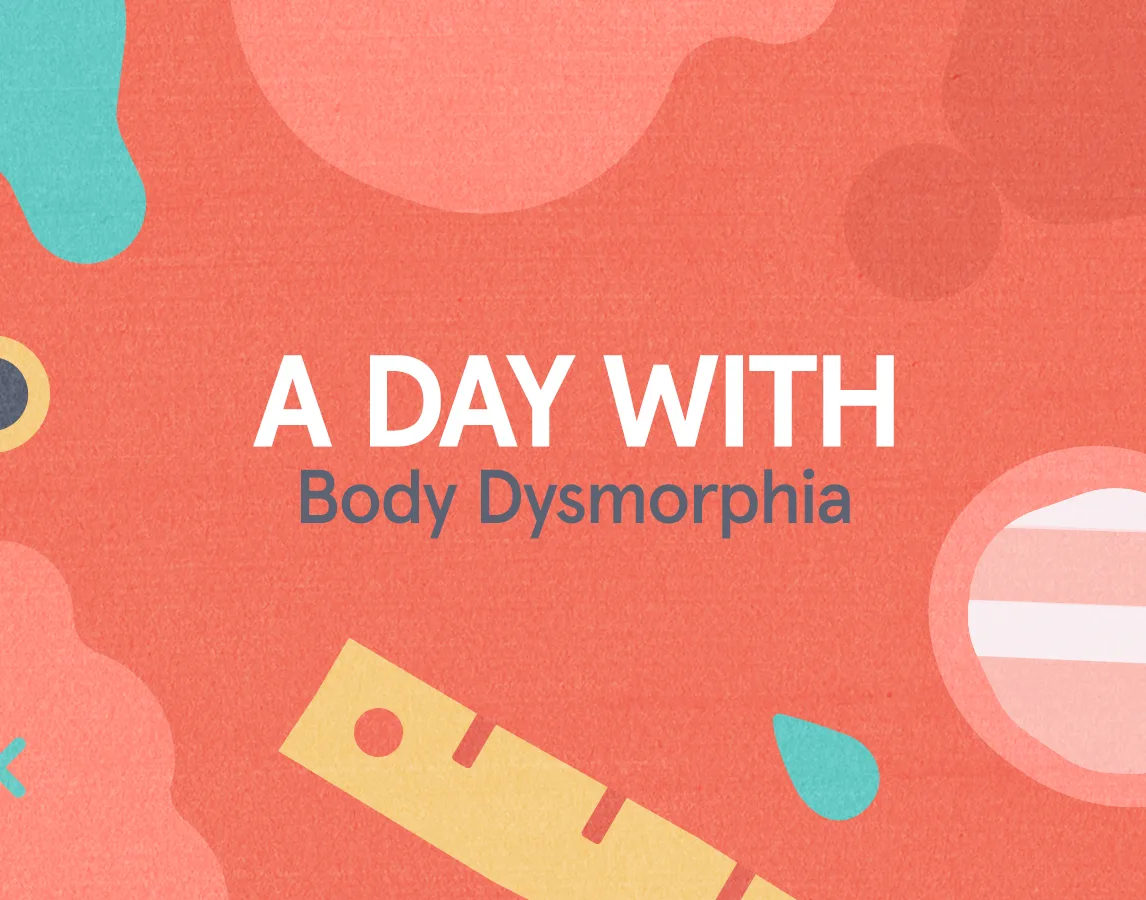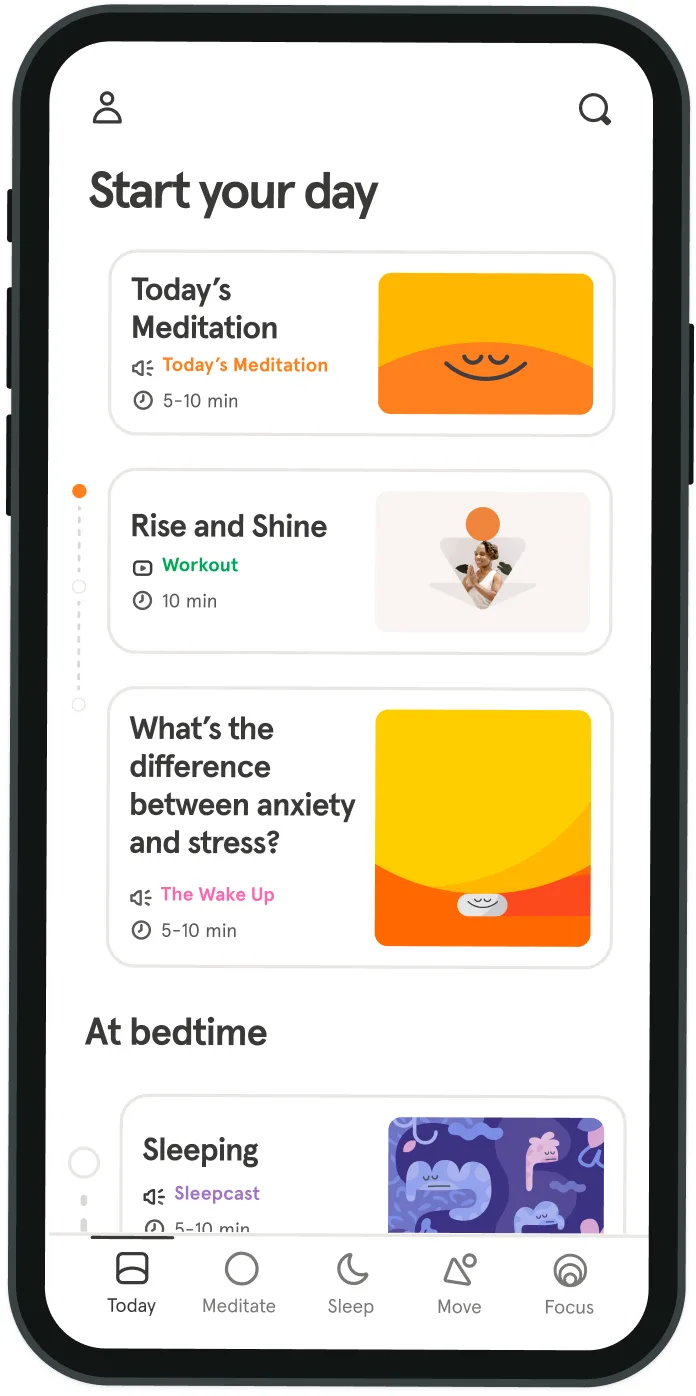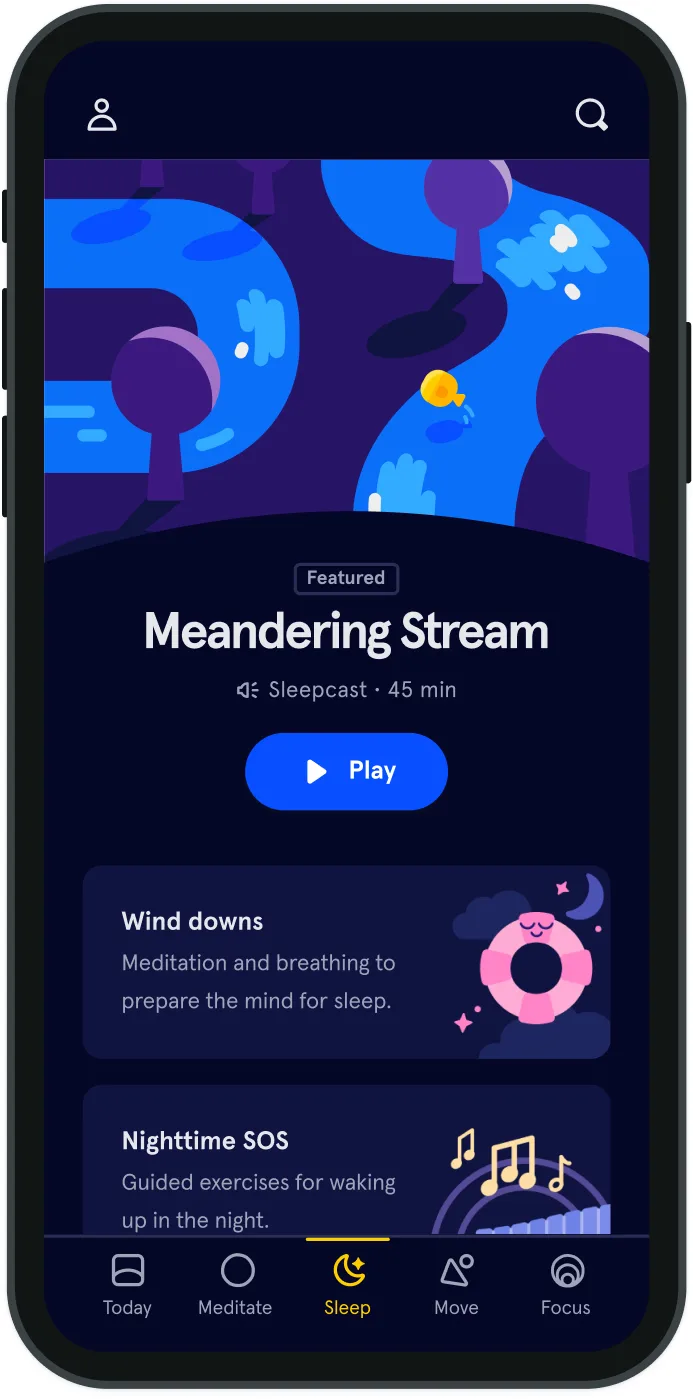A Day With: Body Dysmorphia
[Editor’s Note: This piece is part of an ongoing series of personal essays on what it’s like to live with a mental health diagnosis. Each piece describes a singular and unique experience. These essays are not meant to be representative of every diagnosis, but to give us a peek into one person's mind so we may be more empathetic to all.]
On Halloween, when I was twelve years old, I ran down the hallway of my junior high school, in a Sailor Mercury costume. I was trying to catch up with my neighbor Jessica, and my blue wig was sliding to one side of my head. Right as I got to the exit, I heard a voice.
“Hey, you with the blue hair.” When I turned around, I saw that it was Mike. He’d been suspended several times and got into regular fights. “What?” I said. “Come here.” A group of middle schoolers began to crowd around us. I had just gone through a growth spurt and was one of the tallest girls in my school. I had hips and breasts and weight to me. I knew I didn’t look “normal,” but I also didn’t want to show Mike I was afraid. So I walked slowly up to him. Before I knew what was happening, Mike grabbed my wrist and said, “Who wants to see her arms jiggle?” Cue the nervous laughter of dozens of tweens ready for a show. He slapped my underarm and my skin betrayed me. I pulled away, but this time he grabbed me, both hands on my wrist, spun me around and repeated, “Who wants to see her arms jiggle?” He started shaking me as he spun me out. I pushed him away and walked as fast as I could past the softball fields, towards home. I walked the two miles alone, replaying “Who wants to see her arms jiggle?” like a damaged videotape stuck on the same part. At home, I took a look in the mirror. My arms were growing. I felt like I was in a funhouse, and my arms kept expanding. They were so big and so fat, and disgusting. I felt disgusting. I promised myself I would never look like this again. That year, I ran five miles a day, lost thirty pounds, and fainted at school regularly. I was really skinny, but I never felt that way. Not yet a teenager, I experienced what would be my first of three bouts of anorexia bulimia, and began my lifelong recovery from body dysmorphic disorder.
“Body dysmorphic disorder, unlike body image disturbance is when someone is struggling with an over-emphasis on a particular body part as opposed to someone who, say, doesn’t like their body size or type. They fixate on a body part repeatedly to the point where it interferes with their social, emotional, educational, and occupational welfare,” says Andrew Walen, psychotherapist and CEO/founder of the Body Image Therapy Center. Body dysmorphic disorder (BDD) affects 7.5 million Americans a year. According to the International OCD Foundation, “BDD is about as common as obsessive-compulsive disorder and more common than disorders such as anorexia nervosa and schizophrenia.” The mental illness is an anxiety-based disease, and cannot be cured—it can only be treated. It is also different from and not causally linked to eating disorders or anorexia nervosa. Still, BDD shares many commonalities with OCD, including the experience of uncontrollable, obsessive thoughts. When describing his approach to treating patients’ BDD, Walen says, “This is what we would call an imp of the mind, an obsessional bad thought. So the work is to help them understand that they have to expect that these thoughts are going to happen. They have to accept them. They have to practice sitting through it and living with it and going about the act of daily living even though the thought is there because you can’t just undo a thought.” People with BDD may think something like, “I have a horse face,” and Walen works with patients to replace the stigmatizing language with more factual language. So, patients can comment on the shape of their face, because that’s based on fact, instead of judgment. Over time, Walen says that the more often his patients practice this process, the less anxious they become.
So, how is BDD different from having low self-esteem about one’s own body? Scott M. Granet, a psychotherapist and the director of the OCD-BDD Clinic of Northern California, explains that “most people with BDD have a severe problem with depression and really feel that how they look is the link to their happiness [and] overall sense of well-being. I think that if you understand that, you can understand how so many people who have this become suicidal ... it overwhelms their life.” According to a study exploring the suicidality in BDD, 45 to 70 percent of the patients with BDD have reported suffering from suicidal ideation, and 22 to 24 percent of patients with BDD have attempted suicide. What makes BDD particularly dangerous, is that people who suffer from it develop dependencies on obsessive behaviors; they believe these behaviors will provide relief. One such example is “mirror checking,” the ritual of checking a mirror hundreds of times a day to either catch a glimpse of looking good or, as is usually the case, reinforce feelings of negativity surrounding body image. “People with BDD engage in so much mirror checking because on some level they know, even if it’s just one out of 100 times, they may look in the mirror and say to themselves, ‘well, not so bad today’. And that one percent is enough to drive all of that, knowing that there’s that possibility that they may look better at some point. It may help somebody feel better in the moment, but it’s only going to contribute to somebody feeling worse in the long run,” Granet says.
After six years in recovery, my anorexia bulimia and BDD returned when I was 19. I started running five miles a day again. I ate almost exclusively non-fat, low-calorie foods. Anytime I deviated from eating like this, I would make myself throw up. My collarbones looked ready to pop out of my body. All I could see was my stomach; I was fixated on it. I purposely bought shirts that were too long. Every day, I would pull my shirt down, and check the mirror to make sure my stomach was covered. I would check the mirror 5-10 times before I left my apartment to make sure there wasn’t an inch of skin popping out. In the dining hall, when I sat down, I would suck in my stomach and repeatedly pull down my shirt. I purposely went to the bathroom before and after I ate, so I could make sure my stomach hadn’t grown. I’d stare at the women next to me in class and compare my stomach size to theirs. I was sure that if I had a flat stomach, I would be happy again. Years later, when I finally saw my first psychologist, and I told her about my eating disorder, she asked me how often I looked in a mirror. I almost lied to her—the number was over 100. She told me to get rid of all full-length mirrors in my home, and I wasn’t allowed to check any mirror over 10 times a day. Listening to her, it seemed impossible. At first, all I wanted to do was to check a mirror. I thought about it obsessively; after a few months, I noticed that I had naturally reduced mirror checking.
So, how can BDD be treated? Granet informs me that one of the most important steps in cognitive and behavioral therapy is to have his patients experience exposure therapy, which involves exposing a patient to their biggest fears. For example, someone with BDD who thinks their face is hideous might try leaving the house without wearing makeup. Granet says, “Exposure therapy is a very hard thing to do—nobody wants to put themselves into situations that are going to make them feel uncomfortable. But, there is a point to the whole thing, and people will learn that [their appearance] isn’t as important as they think it is [and] this isn’t just a matter of wanting to look a certain way, they feel this way because it’s a psychiatric illness.” Nancy Clark is a sports nutritionist and registered dietician based in Boston. When describing how she approaches working with clients with BDD, she says her first step is to “develop a food plan to help them reach their goals, and also to remind them that there is a possibility that their bodies are good enough the way that they are, and that they’ll never have the perfect body, but maybe they’ll have an excellent body.” Clark encourages clients with BDD to think of food as fuel and to confront body image, or a distorted body image with fact-based evidence: measuring her clients’ body fat, showing photographs of what real athletes look like, etc. “Your body was born excellent, it still is excellent, but it’s your mind that gets you into this mess,” Clark says. “People think that they are their body and they aren’t—they are two separate entities.” Walen likes to use the acronym CARESS when working with his patients to find coping strategies: Communicate Artistically, Release Endorphins, and Self-Soothe. He finds that some patients respond very well to communicating how BDD affects them through creative processes such as songwriting, drawing, storytelling, or photography. As BDD can be heightened by traditional exercise, Walen recommends that patients release endorphins by laughing regularly or engaging in physical touch. He adds that acts of self-care, such as listening to music or meditation can help reduce anxiety in his patients. For me, living with BDD involves refocusing efforts and re-training the mind from what I am most afraid of to what I hold most valuable. It’s a re-examination of the self that goes beyond appearances, and while we can accept some aspects of anxiety, we need not succumb to it. Seven years after my first psychology session, I still don’t have a full-length mirror in my bedroom; although I still live with BDD, when I do catch myself in the mirror and don’t like what I see, I remind myself: what you see is not there. I finally believe that.
* * *



Be kind to your mind
- Access the full library of 500+ meditations on everything from stress, to resilience, to compassion
- Put your mind to bed with sleep sounds, music, and wind-down exercises
- Make mindfulness a part of your daily routine with tension-releasing workouts, relaxing yoga, Focus music playlists, and more
Meditation and mindfulness for any mind, any mood, any goal
- © 2024 Headspace Inc.
- Terms & conditions
- Privacy policy
- Consumer Health Data
- Your privacy choices
- CA Privacy Notice
